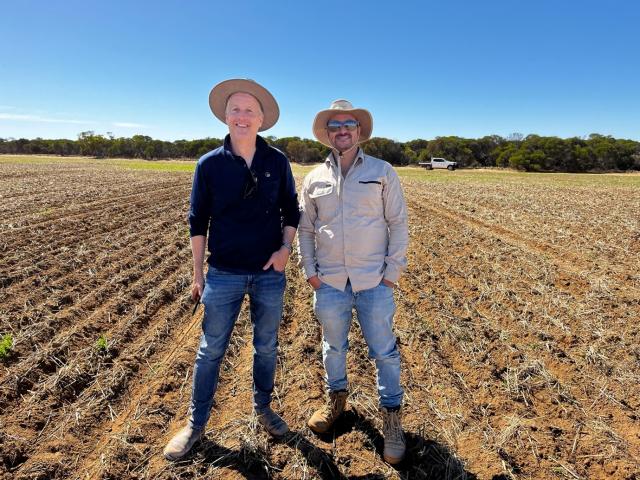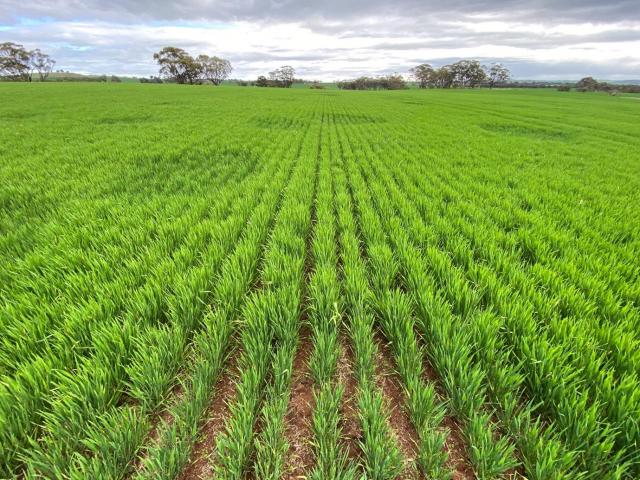New project to reduce Rhizoctonia impact in low and medium rainfall zones
At a glance
- A new national project, co-funded by GRDC, aims to reduce the impact of the disease Rhizoctonia in the low and medium rainfall zones of the Western Australia (WA) grainbelt in barley and wheat crops.
- Trials will be conducted to examine the effects of different amelioration techniques on the disease, the influence of inoculum levels, soil characteristics and environment on rhizoctonia, as well and the economic impact with a bio-economic model being developed.
What is Rhizoctonia root rot?
Rhizoctonia root rot (Rhizoctonia solani AG8) is a fungal soilborne disease that damages the roots of broadacre crops, preventing the uptake of water and nutrients and causing stunted plant growth.
Rhizoctonia (also known as Rhizo or R. solani) can affect all types of crops but cereals, especially barley, are the most impacted.
When the pathogen infects young seedings, the disease is typically seen as a circular depression in the crop with a sharp edge. Within these patches plant numbers may be decreased and grain yield significantly reduced. Rhizo patches can range from less than a metre to several metres across and can sometimes coalesce. They can also reoccur in a similar position over more than one season or they can migrate or completely disappear over time.
A new national project, co-funded by GRDC, aims to reduce the impact of Rhizoctonia in the low and medium rainfall zones of the Western Australia (WA) grainbelt in barley and wheat crops. The new project is being led nationally by Department of Primary Industry and Regional Development (DPIRD) plant pathologist Dr Daniel Huberli in collaboration with the Commonwealth Scientific and Industrial Research Organisation (CSIRO), the South Australian Research and Development Institute (SARDI) and Crop Disease Solutions (CDS).
The R. solani project will be investigating management strategies to reduce R. solani impact, the influences on the Rhizoctonia disease expression and the economic impact of the disease.
Management strategies
Mechanical soil amelioration is becoming more popular in WA to mitigate soil constraints such as subsoil compaction.
While it is known that soilborne pathogens such as R. solani are redistributed through soil amelioration practices, such as mouldboard ploughing, it is not known how these practices directly impact the disease.
Field trials have been established this year by DPIRD's plant pathologist, Dr Ahmed Saad, at DPIRD's Wongan Hills and Merredin Research Stations, and at Streaky Bay, South Australia (SA), by SARDI's Minnipa Agricultural Centre, that contain R. solani inoculated plots. Early next year, different soil amelioration techniques will be applied to monitor their impact on the disease. In the WA trials, Dr Saad is collaborating with DPIRD's soils and nutrition group, which is led by Dr Stephen Davies. Other soil amendments, such as biochar and compost, are also being investigated in glasshouse trials at DPIRD's Northam Research Facilities this year, with the best-performing options also applied in the field trials next year.

In the low rainfall zone of WA, it is not always economical to apply upfront fungicides to control R. solani. Field trials will be conducted in both the low and medium rainfall zones to assess the effects of different fungicides and biological agents, including new actives, at different application timings. This will include both standard practice and multiple spray applications.
Disease expression
While it’s known that R. solani disease incidence and patch development is influenced by inoculum level, soil characteristics and environmental conditions, there is currently limited knowledge on how the disease is influenced by these factors.
Dr Huberli and his team, along with collaborators from Adelaide at CSIRO, have established two field sites in WA, and CSIRO have set up two sites in South Australia to further investigate these influences in cereals. Unmanned aerial vehicle (UAV) imaging techniques, targeted sampling of soil for properties, pathogen distribution, and disease expression, along with and yield maps, will be used to better understand this soilborne disease. Data from these trials will be collected over two consecutive cropping seasons to determine the impact seasonal influences such as temperature and rainfall have on the expression of the disease.
Economic
Severe seedling infection by R. Solani that causes crown root infections in mid-winter spring can result in reduced plant vigour, tiller number, or grain quality. The economic impact of the attendant bare patches and associated yield loss is not well studied or documented.
Research by the SARDI team into how these infections are influenced by the effect of water and heat stress, combined with Bureau of Meteorology (BOM) data, will be used to determine the frequency of seasons that conditions are conducive or not conducive to yield loss, to better understand the impacts of crown rot infections.
DPIRD economists Amir Abadi, Paul Mattingly and Saloomeh Akbari, are developing a prototype bio-economic model to estimate the impact of this disease on barley and wheat, under current and improved management, in southern Australian grain regions. It utilizes GRDC’s data on production area and volume by regions to estimate the impact of disease at a regional scale.
The economics team are also progressing a field level prototype version of this model to enable agronomists and growers to estimate the impact of rhizoctonia disease on specific properties or paddocks, drawing on site specific data, as well as relevant historical data. The model includes consideration of a range of prices, as well as yields with and without treatment, that are likely to prevail for the season and paddock in focus.
For more information and pictures of disease symptoms refer to the department’s;
- GRDC's Tips and Tactics Rhizoctonia factsheet.
- Diagnosing rhizoctonia root rot in cereals page.
- Rhizoctonia in your paddocks YouTube video.
- Root disease under intensive cereal production systems page
- Soil Quality: 5 Soil Biology e-book

